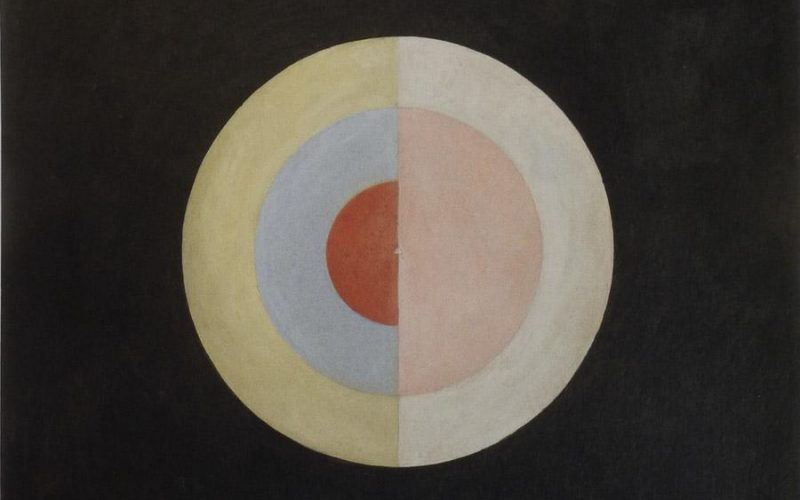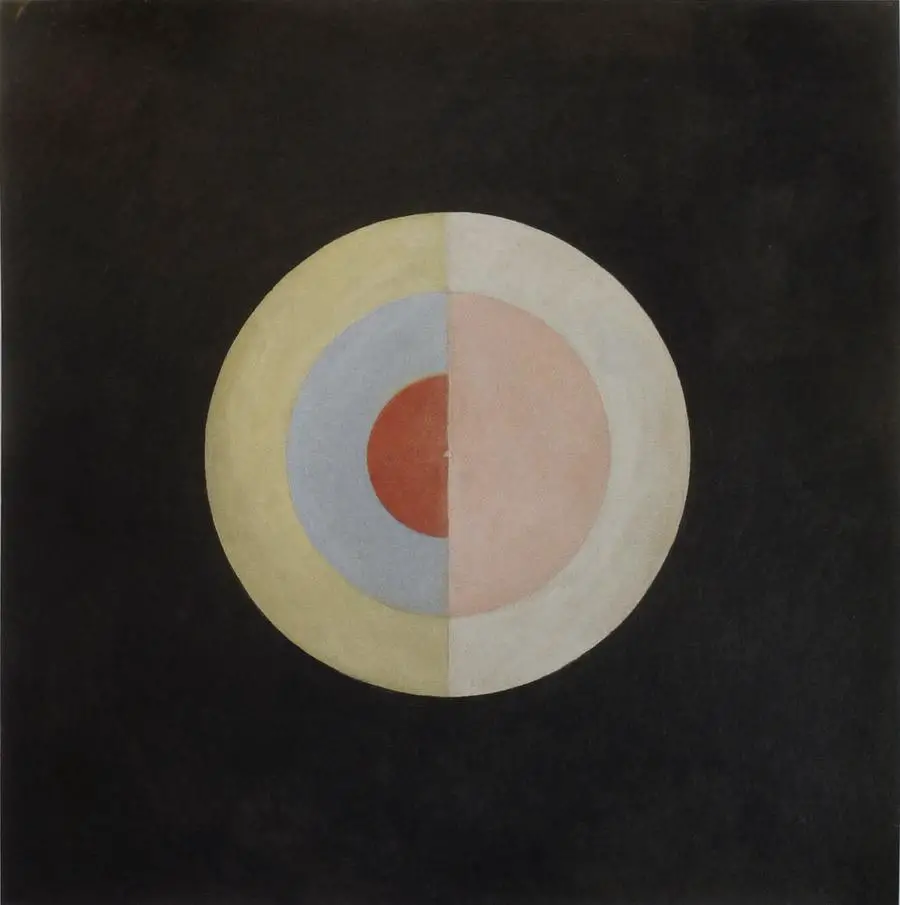
Artwork or pieces that are published in the later period of the 20th century are considered to be contemporary. These contemporary artworks represent certain aspects of society, individual personas, cultures, and other various themes. Artists work in a world unlike ours and their abstractions are a reflection of how they see the world. And since art is such a highly subjective field, this list may not agree with some art enthusiasts. These art pieces are some of the most influential and famous contemporary pieces in the world of abstract art. This list does not hold any order as the order does not hold much in comparison to chaos. Post-present day, post-structuralist, women’s activist and Marxist hypotheses have assumed significant parts in the improvement of contemporary speculations of art.
1. Wassily Kandinsky, 1939 – Composition X
2. Piet Mondrian- Broadway Boogie Woogie, 1942
3. Wassily Kandinsky, Composition VII- 1913
4. Robert Delaunay – Rythme, Joie de vivre, 1930
5. Theo Van Doesburg- Composition 1, 1916
6. Paul Klee- Senecio, 1922.
7. Kazimir Malevich- The Black Square, 1924
8. Hilma Af Klint- Group X, No. 1, Altarpiece, 1915.
1. Wassily Kandinsky, 1939 – Composition X
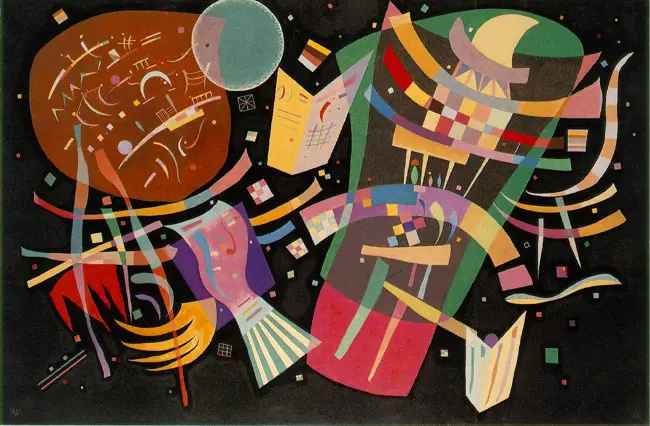
Image via- Wikimedia Commons
Wassily Kandinsky was a Russian painter as well as an art scholar. The impact he incited and left on the art world and on deliberation was massive. He helped to establish the art bunch Phalanx and The New Group of Artists from that point, organizing shows for his peers over his years as an artist. He delivered more than 600 works over the range of his profession, with a 1913 composition arriving at his record closeout cost of $41.6 million of every 2017.
Notwithstanding this great record, his most critical work was apparently ‘Composition X’. Toward the end in his long-lasting arrangement of ‘Compositions’, he looked to finish his examination concerning the virtue of structure and articulation through this work. Having used the shading dark sparingly in his training so far, it has been evaluated that this work is both suggestive of the universe. It also presents the murkiness of portending approaching the finish of his life.
2. Piet Mondrian- Broadway Boogie Woogie, 1942
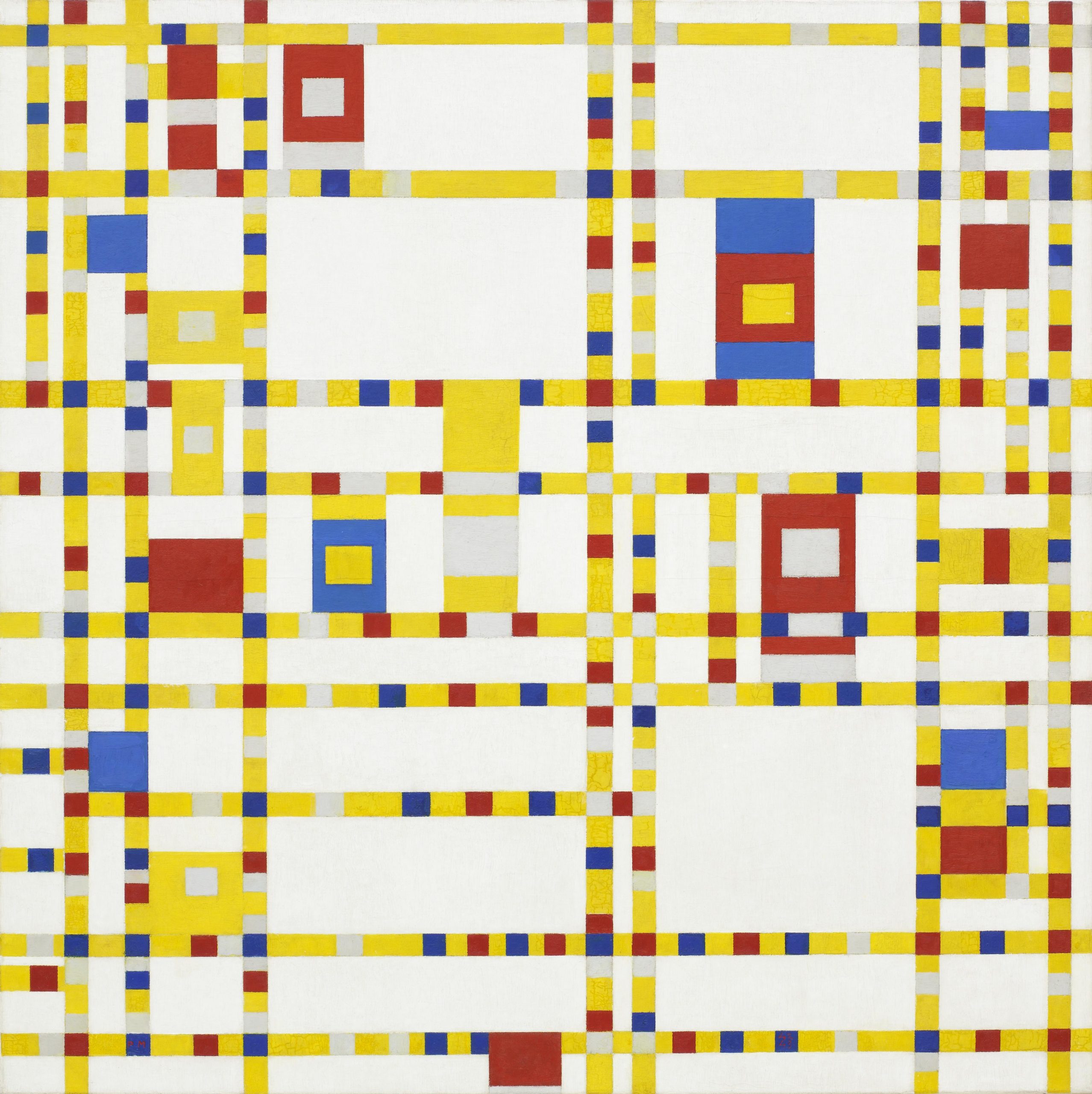
Image via- Wikimedia Commons
Mathematical reflection is a unique art dependent on the utilization of mathematical structures. Piet Mondrian instituted the term neoplasticism for his theoretical mathematical artistic creations in which he used the straight line, the three essential tones, and the neutrals of dark, white and dim. Mondrian’s last finished painting, Broadway Boogie Woogie is enlivened by the city framework of Manhattan and the Broadway boogie-woogie music, which Mondrian cherished. The work of art is viewed as the zenith of Mondrian’s portrayal using his pictorial jargon of lines, squares, and essential tones. It denotes the climax of his complex development and is quite possibly the most persuasive artwork in the school of unique mathematical artistic creation.
3. Wassily Kandinsky, Composition VII- 1913Wassily Kandinsky, Composition VII- 1913
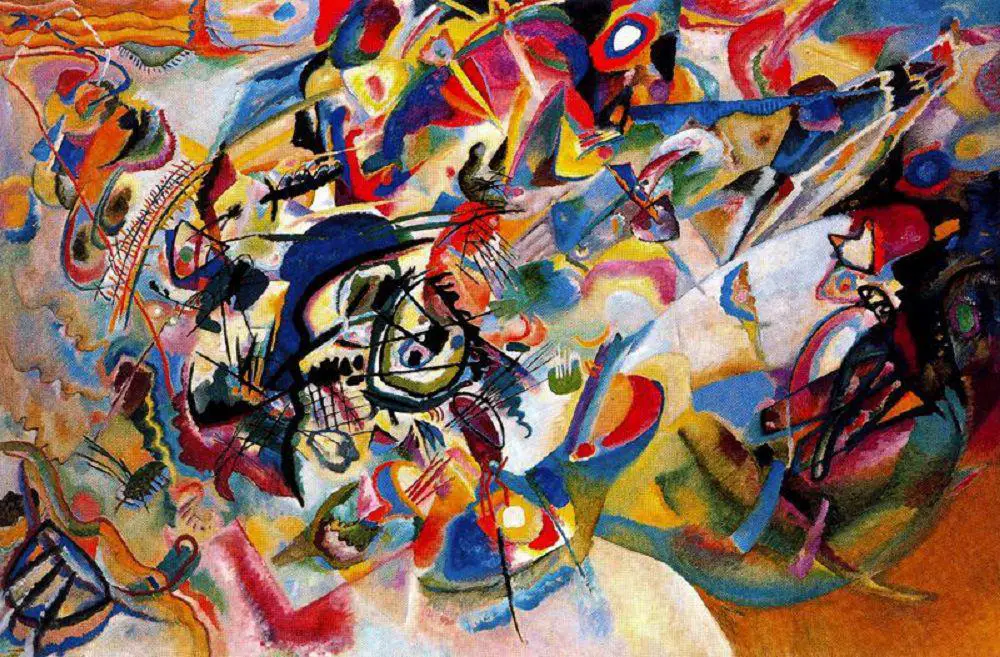
Image via- Wikimedia Commons
Coming back to Kandinsky, the years 1910 to 1914 are viewed as the pinnacle of Kandinsky’s vocation, and this painting is referred to as the zenith of his artistic accomplishment during the period. He made a larger number of studies for this creation than for some other, however, he painted the last form in only three days. Organization VII is accepted to insinuate the whole-world destroying topics of Deluge, Last Judgment, Resurrection, and Paradise. A whirling storm of tones and shapes, it was considered by Kandinsky to be the most mind-boggling piece he ever painted. It is perhaps the most eminent bits of theoretical art ever made.
4. Robert Delaunay – Rythme, Joie de vivre, 1930
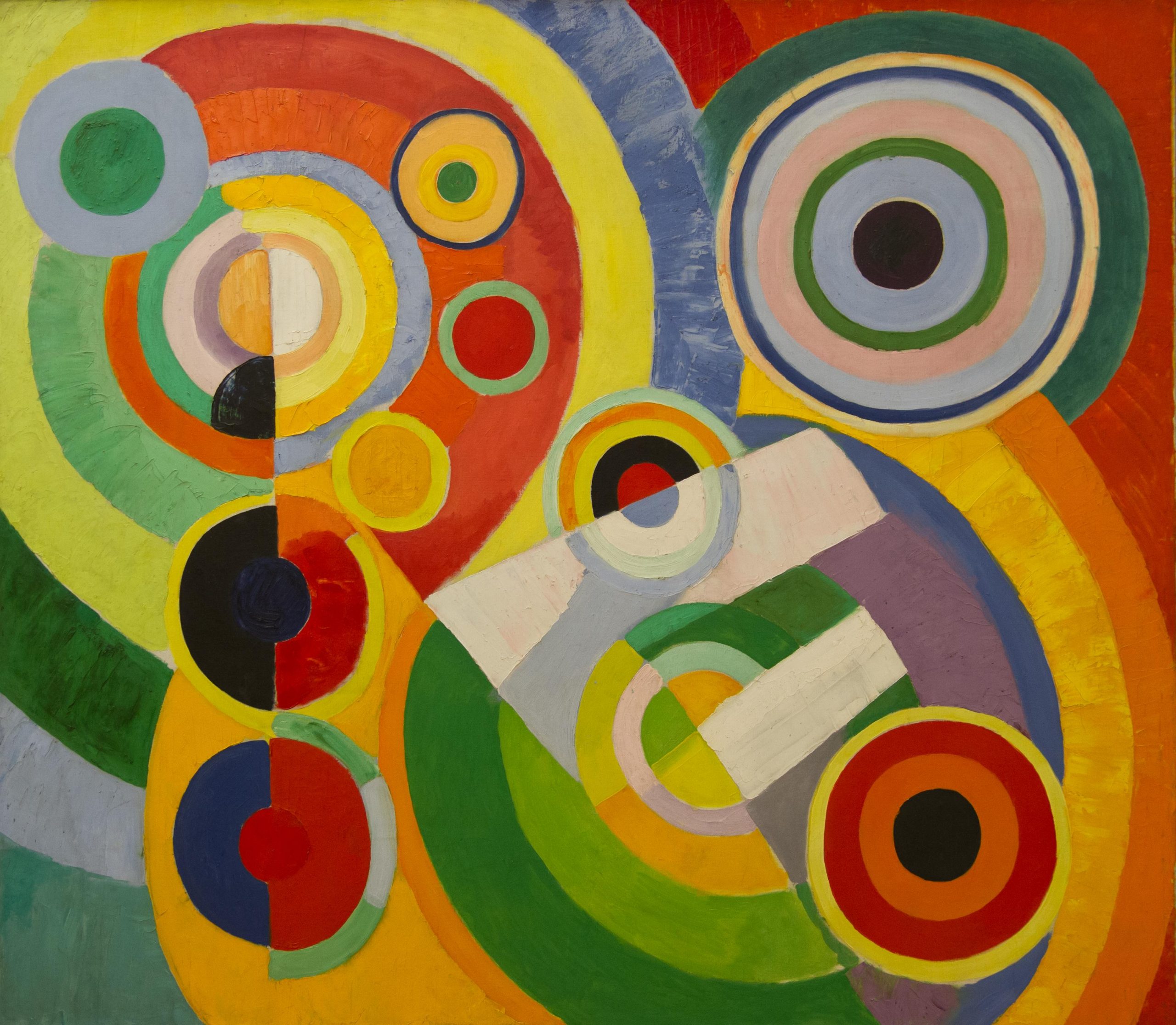
Image via- Wikimedia Commons
Delaunay applied his pictorial language of concurrent differentiation of shadings to roundabout structures. These compositions inventive on the grounds that they at this point don’t allude to the outer world yet rather to the non-target domain. However, as Relief; Rhythms illustrates, there is a suggestion to the divine assortments of the sun, the moon, and the planets. Round types of splendid tints of red and blue are fastened to the white foundation and appear to drift in space. This impact is the aftereffect of Delaunay’s devotion to considering the play of shadings in beams of light, crystals, and coronas conformed to lights.
5. Theo Van Doesburg- Composition 1, 1916
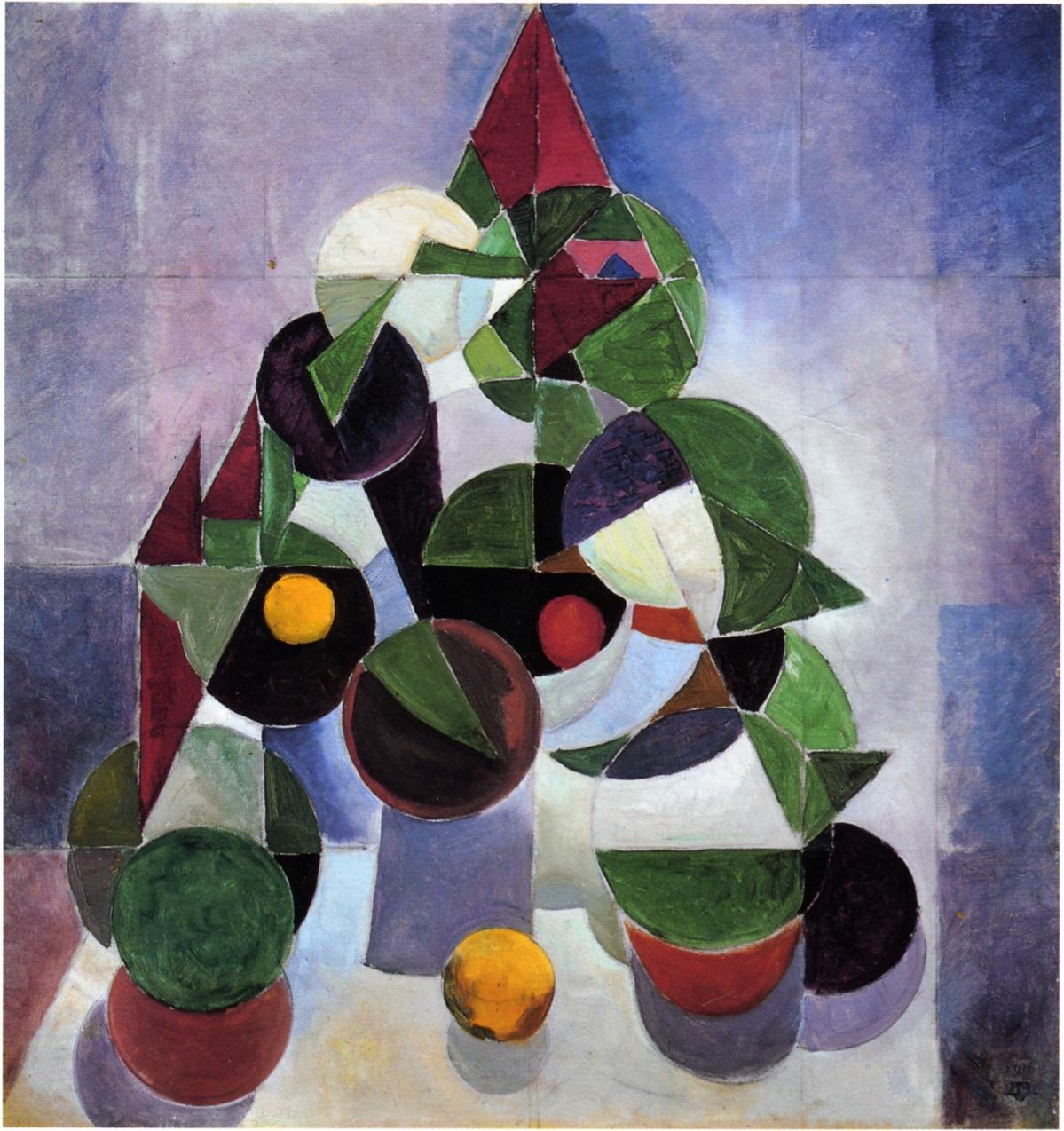
Image via- Wikimedia Commons
Van Doesburg’s idea of ‘Elementarism’ was a unique development from the Neo-Plasticism he had sought after related to Mondrian in the mid-1920s. Both these pioneers of deliberation had founded their joint tasteful, which for a period they called ‘de Stijl’ (the Style). From an acknowledgment of the requirement for art to move past easel-painting and from their idealistic confidence in the intensity of such an art to shaping the world. Each in their own particular manner looked to set up a useful diagram that gave agreeable pictorial articulation to their shared philosophical perspective on the world. A substance included a set of jargon of structures. An agreeable pictorial goal of these basics diminished to their barest fundamentals – line, shading, space. They would be able to accept, lead at last to nothing not exactly the foundation of widespread congruity of life on Earth.
6. Paul Klee- Senecio, 1922.
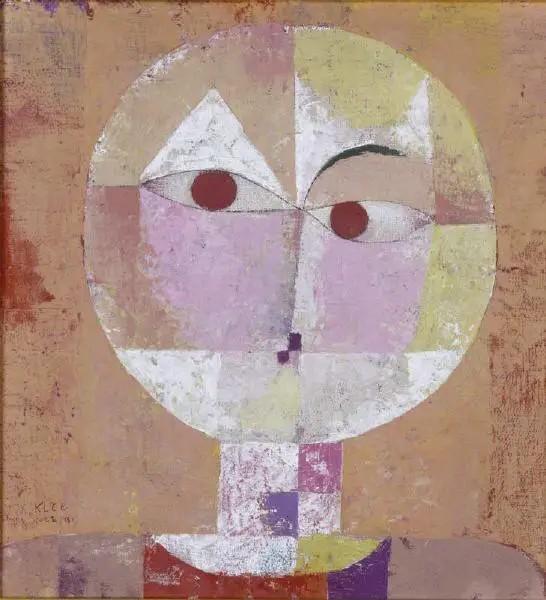
Image via- Wikimedia Commons
Klee’s adaptation of the human head divides an elderly face into rectangles of orange, red, yellow, and white. The flat geometric squares within the circle resemble a mask or the patches of a harlequin, hence the title’s reference to the artist-performer Senecio. The triangle and the curved line above the left and right eyes respectively give the illusion of a raised eyebrow. The painting’s use of lines, ambiguous shapes, and space all demonstrate the principles of Klee’s artistry in which simple graphical elements are set in motion by energy from the artist’s mind.
7. Kazimir Malevich- The Black Square, 1924
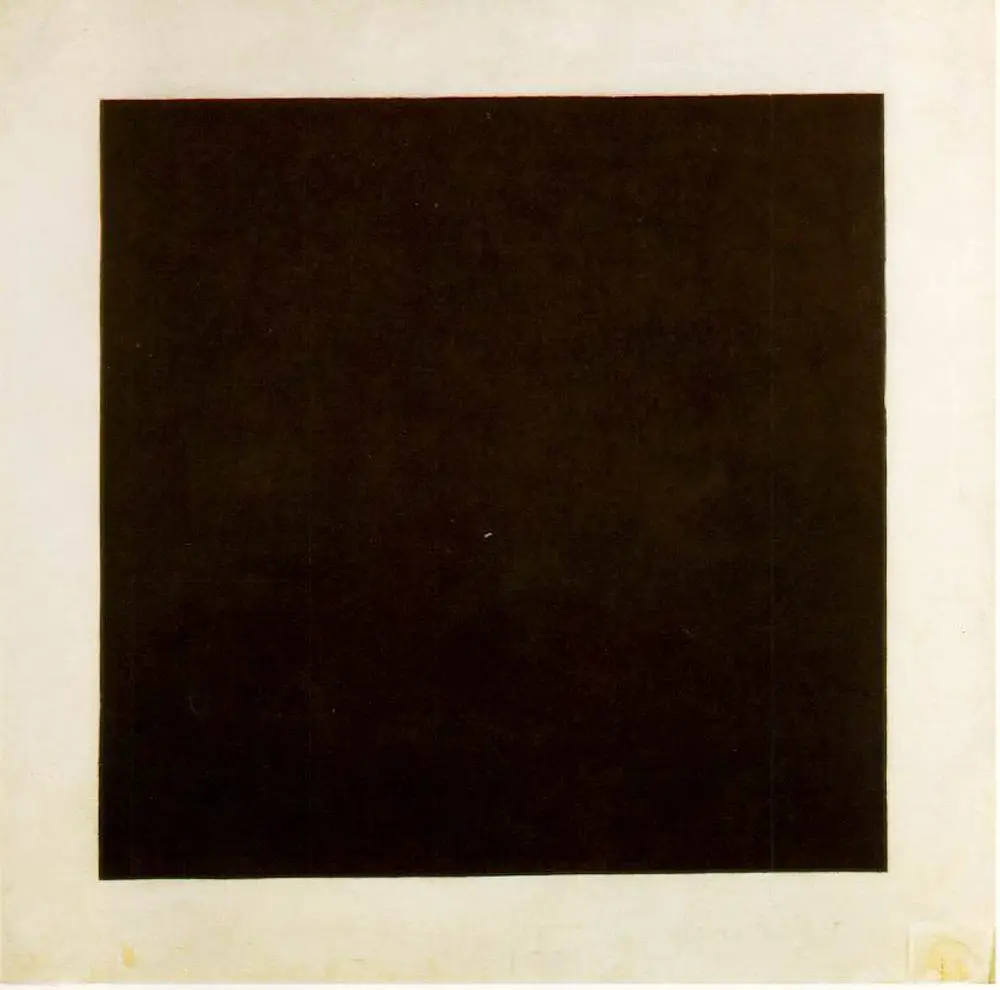
Image via- Wikimedia Commons
Kazimir Malevich was the organizer of the workmanship development known as Suprematism, which zeroed in on essential mathematical structures. For example, circles, squares, lines, and square shapes, and the utilization of restricted scope of shadings. He is hence a pioneer of mathematical unique craftsmanship. The Black Square is alluded to as the “zero purposes of painting”, alluding to the work of art’s chronicled essentialism. The work is “stupendous not for what Malevich put into pictorial space but rather for what he took out: substantial experience, the principal subject of Western workmanship since the Renaissance”. The Black Square is viewed as a notable work of unique craftsmanship and it is perhaps the most popular compositions of the 20th century.
8. Hilma Af Klint- Group X, No. 1, Altarpiece, 1915.
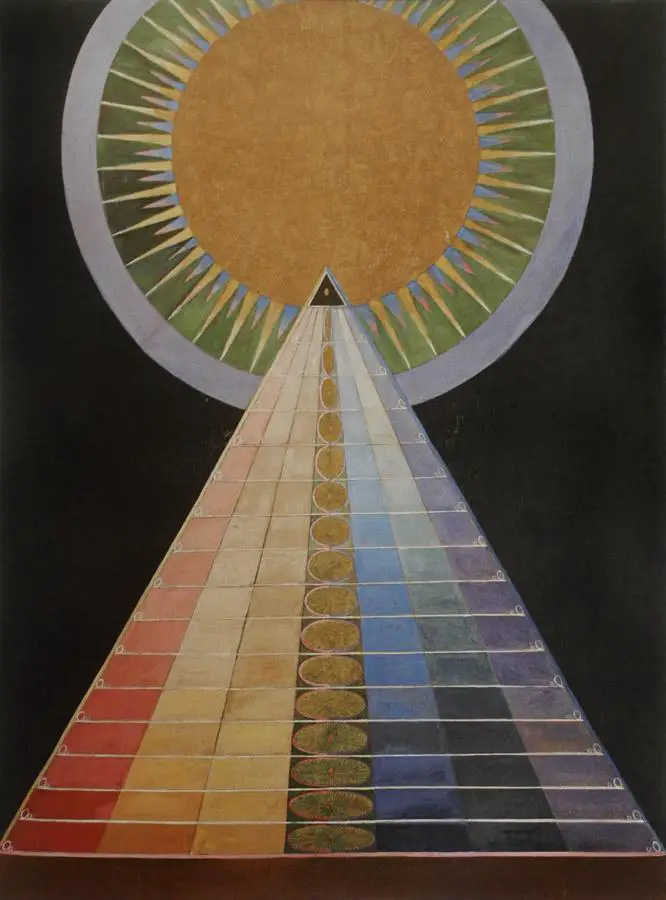
Image via- Wikimedia Commons
It appears to be the world is at last prepared for Hilma Af Klint, and the hidden message of strengthening her story passes on. During that period, ladies topic was encircled by the commonplace, the homegrown universes of creatures and blossoms, to which they were persuasively kept. In working as a medium, be that as it may, Af Klint had the option to chip away at an inestimable scale. Her rediscovery happens close to the famous revival of the witch as a women’s activist symbol. The witch, as Af Klint, speaks to substantial and mystic autonomy – a figure possessing mystery information gathered external the customary structures of intensity.
Like Af Klint, the witch’s intelligence, communicated through mantras and spices, is established in the characteristic world and in coordinated efforts with different ladies. For what reason does Af Klint address us in the present?
Maybe in light of the fact that she speaks to values – female, profound, natural, collectivist – dissolved by the ascent of mechanical advancement, values we urgently need to recover.
Conclusion
The intensity of reflection has additionally saturated contemporary craftsmanship and still holds a solid order of the market in business displays and sale houses today. From the fast uprising of Abstraction-Création, the gathering shaped to neutralize the impact of Surrealists. This in turn produced noticeable conceptual craftsmen who actually practice inside the class today, plainly this classification will endure numerous years to come.
Contemporary abstract art, then again, doesn’t have one, single goal or perspective. Its view rather is indistinct, maybe intelligent of the present reality. It very well may be consequently, conflicting, befuddling, and open-ended.
Works Cited
Anirudh. (2017, December 17). 10 MOST FAMOUS ABSTRACT PAINTINGS BY RENOWNED ARTISTS. Retrieved from https://learnodo-newtonic.com/: https://learnodo-newtonic.com/famous-abstract-art
Contemporary art. (n.d.). Retrieved from Wikipedia: https://en.wikipedia.org/wiki/Contemporary_art
Livneva, A. (2020, Feb 12). 20 Most Famous Abstract Paintings Today. Retrieved from www.virtosuart.com: https://www.virtosuart.com/blog/famous-abstract-paintings
Team, T. A. (2019, May 24). Most Famous Abstract Artworks In The Last 100 Years. Retrieved from The Artling: https://theartling.com/en/artzine/famous-abstract-art/
